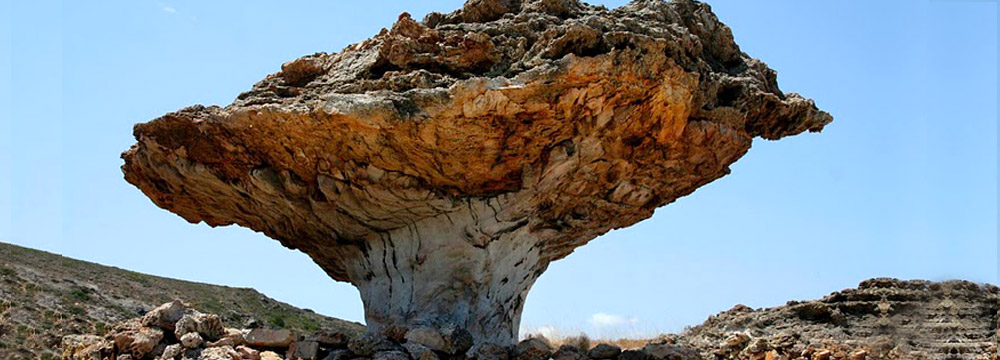Horio is not only the main village in Kimolos, but also the island’s capital with inhabitants accounting for 90% of the island’s entire population which is nearly 800 residents. Situated in the southeastern part of Kimolos on the foot of mount Xaplovouni, the capital exudes a sense of old-world charm adorned with the brilliant architectural style of the Aegean. The silver lined beaches, the white washed walls with the blue painted windows and the narrow pebbled streets surrounding them create an artistic landscape of tranquility. Filled with places of interest it is the principal spot of attractions and sightseeing on the island.
The Medieval Castle
Dating back to the 14th or the 16th century the Medieval Castle is located up town and comprises of the inner castle (in ruins) and the outer castle that still stands even after the pirate attack of 1638. The castle is a characteristic example of the Aegean fortification architecture with houses side by side built from solid rock, white washed walls and steel doors.
The Archeological Museum
Situated opposite to the Metropolitan church of Panagia Odigitria, the Archeological Museum hosts exhibits and archeological findings showing the history of the island including vessels and utensils from the early 7th century B.C.
The Folk & Maritime Museum
Situated in the traditional castle of Kimolos, the Folk and Maritime museum preserves and displays the heritage and culture of the island through a wide variety of household items including handmade ornate embroideries, weaving textiles and furniture showing the progression of life in Kimolos through time.
The Windmills of Xaplovouni
The picturesque windmills of Xaplovouni are definitely worth seeing. All together there are 8 windmills on Kimolos Island, none of which is still operational, but serving as a worth visiting monument of the past.• The Church of the Birth of Christ (1592)
• The Church of Pantokratoras
• The Church of Saint Hrisostomos (17th century)
• Panagia of Konomou (17th century)
• Taxiarches (17th century)
• Hrisopigi (17th century)
• Sotira (Savor) (17th century)
• Agioi Anargiroi (17th century)
Psathi
The picturesque settlement of Psathi is situated southeast only 1 km away from the capital. It is the main port of Kimolos and the second inhabited place right after Horio. In Psathi visitors can relax on the golden sandy beach or enjoy their coffee and local specialties at the few taverns and cafe bars found in the area.
Prassa
The quaint area of Prassa is known for the extraction of chalk, its pristine white sandy beach and the picturesque sea caves right beyond the church of Saint George were the Mediterranean monk seals breed during autumn.
Goupa Karra
Situated only 1.5 kilometers from Psathi the small settlement of Goupa Karra is a place of exceptional beauty. The few houses of the settlement are carved into the rocks were guests will also find the syrmata caves chiseled into the rock were local fishermen keep their boats.
Only 2 km from the island of Kimolos lays the island of Polyaigos, literally meaning many goats, which is the largest uninhabited island of Greece and the best preserved natural island in the Mediterranean. It is a barren island mostly owned by the Greek Orthodox Church. Its only inhabitants are a few goats, the rare Mediterranean monk seal as well as other endangered species such as some rare species of vipers and falcons. The only things you will find on this island are a church dedicated to Virgin Mary dating back to the early 16th century and an automated lighthouse. Because of its unspoiled and utterly immaculate natural beauty the island was part of the European program “Natura 2000”.
Other than Polyaigos, in the municipality of Kimolos the islands of Agios Georgios and Agios Efstathios are also included. These two small islets are owned by a local ship owner family, are uninhabited and gifted with extreme natural beauty.







 BACK TO LIST
BACK TO LIST